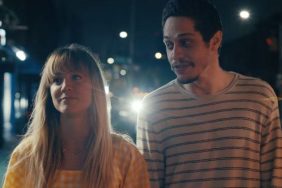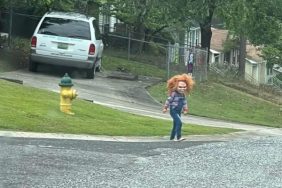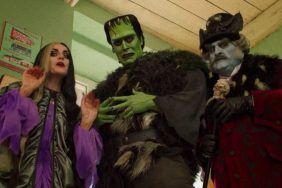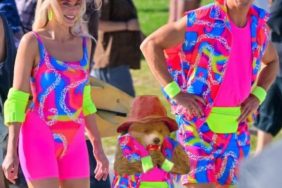This is actually the third time we’ve interviewed Edgar Wright about The World’s End, the third film in his celebrated Cornetto Trilogy, available on DVD and Blu-ray as of today. But due to the nature of the film, which changes genre midway through and contains multiple plot points that could be considered spoilers, we were never able to ask him some of our most important questions before. At least, not without being extremely rude to audience members who hadn’t seen the film yet. But you can watch our early, spoiler-free interviews here and here if you’re so inclined.
So this morning I got on the phone with Edgar Wright to talk about The World’s End‘s ending, the nature of the blanks, one of the big cameos and CraveOnline‘s ongoing theory that maybe… just maybe… half of the movie doesn’t even happen at all. So be warned folks, this is an ongoing SPOILER WARNING, because for the most part, all we talk about are the spoilers.
CraveOnline: We’ve got a theory kicking around at our website that the second half, or last two-thirds of The World’s End – after the robots show up – is all in Gary’s head.
Edgar Wright: [Laughs] I can’t remember who was saying this, I think it was Ben Wheatley, he had had this theory that you could put that theory into any movie, and if you did, the point where… The thing is, if you were doing it, the obvious place is in the fourth bar where [Gary’s] in the toilet on his own, where he’s looking in the mirror. That would be the point where he goes down the rabbit hole and it’s all a dream.
He’s just been given a stern talking to. He’s just been told to grow up, and his world comes crashing down, so he just invents this fantasy.
That’s the point, isn’t it? It comes up before.
I want to talk to you about the ending. When we find out what The Network is, we see you built their look and their methodology around cell phones, and that they’re behind the globalization of technology. Do you have anything against cell phones?
[Laughs] Sometimes. I mean, I’m speaking to you on an iPhone as we speak.
Same here.
But sometimes I feel like… I don’t feel like I would ever fully go off the grid, and I certainly like technology, but I do feel like sometimes I don’t like the way it runs my life. I don’t like how wedded I am to smart phones and laptops and stuff. So frequently I wish I could go agrarian and throw my MacBook into the lake. [Laughs]
You don’t just throw Gary’s MacBook into the lake, you throw the entire planet’s.
Yeah, that’s it. Everybody goes down to the new Dark Ages. There’s an element of post-apocalypse films, having seen them growing up, and TV series as well, scenes like the Tripods and stuff… It always seems like the idea of going back to rural England, there was something that was slightly enticing about it. Because all five of them, it’s not just Gary, the four aren’t necessarily happy, but in some cases seem happier going back to medieval times.
I remember watching it thinking, “Does Edgar Wright like Escape from L.A. as much as I do?”
[Laughs] You know, I like the last scene. I like Escape from New York better, but my favorite bit of Escape from L.A. is the final scene, where he switches the lights out and then he lights up. That is my favorite bit of that movie. John Carpenter is always great with endings, and that’s a good one.
You talk about in the commentary track the things that connect the Cornetto films, and one of the things you talk about is using the elements of genre to tell a different story, a sort of stealth story.
Yeah.
But it feels like in Shaun of the Dead and Hot Fuzz the rules of the genre are more specific, or at least more talked about, than The World’s End, which has a lot of different sci-fi influences.
I guess with Shaun. Especially Hot Fuzz, because Hot Fuzz deals a lot more on the nose with the difference between the reality of the job and the fantasy of films. But with this one I think we wanted to use the sci-fi as a metaphor, so we designed our own particular strain of automatizations, really. It’s definitely inspired by certain writers and films, but it’s not specifically… You want the characters to be experiencing it as if it was happening to them for the first time, and they weren’t trying to connect it something they’d seen on screen.
What was the inspiration for the giant robot modern art statue, besides the fact that it’s just cool?
I know that you that you have this a little bit in the States, but we definitely have it in England… I remember as a kid there were always these municipal statues that were always slightly creepy. [Laughs] Like Henry Moore, who’s a sculptor that we like. [We] saw it as a Henry Moore sculpture, or kind of rip-off ones, that sort of look like alien artifacts. They seem to be something that was made in the last 20 years so we always had this idea about if there was a mark that came with this new sculpture. It was a way of marking that this was a new town, and the idea that they were sentinels in each town that had been changed by The Network. If I’d had a bigger budget I would have included more of the robot. [Laughs] I maxed out on my robot shots.








